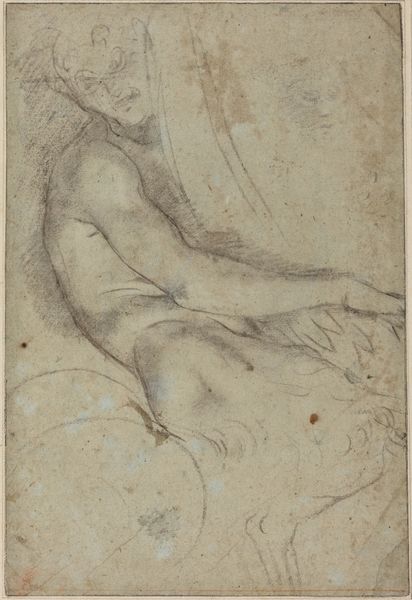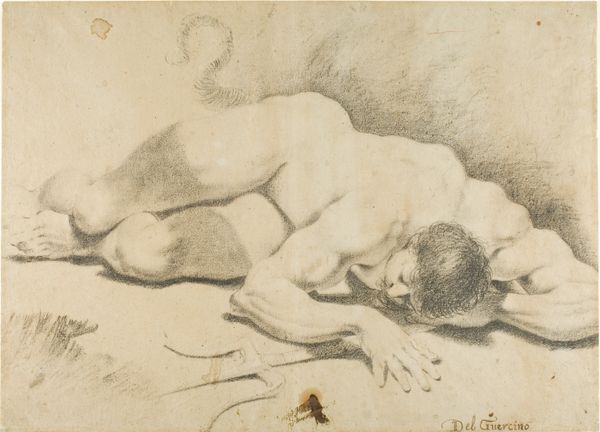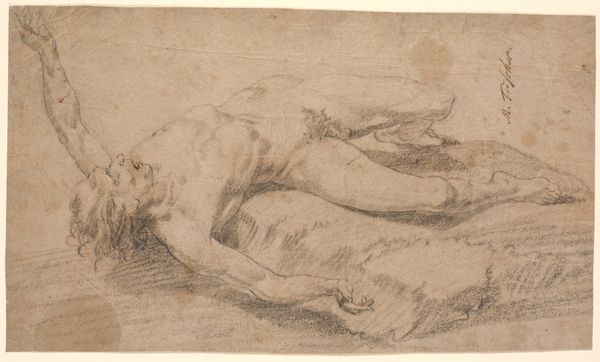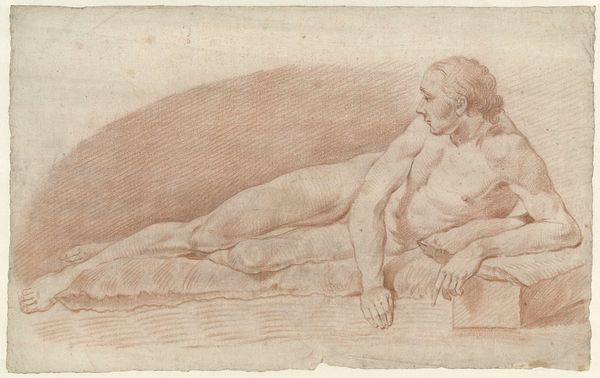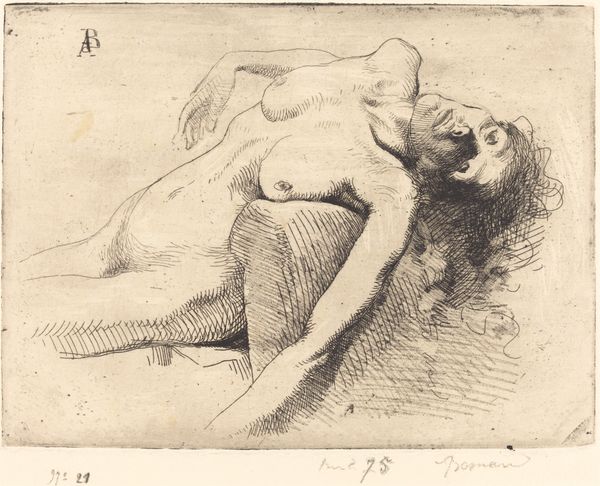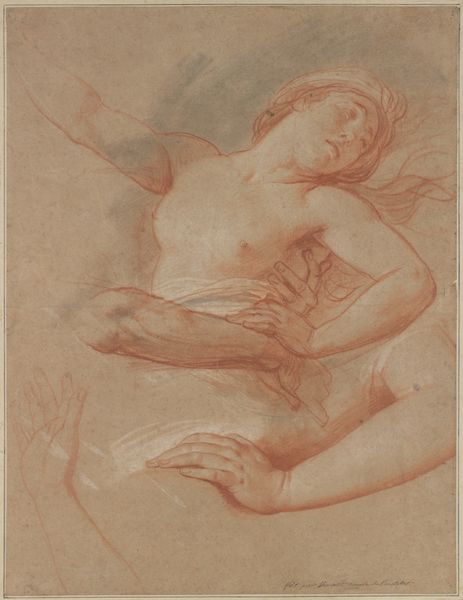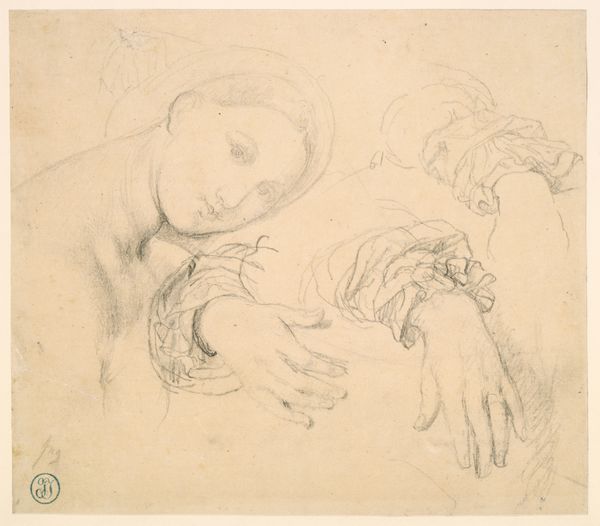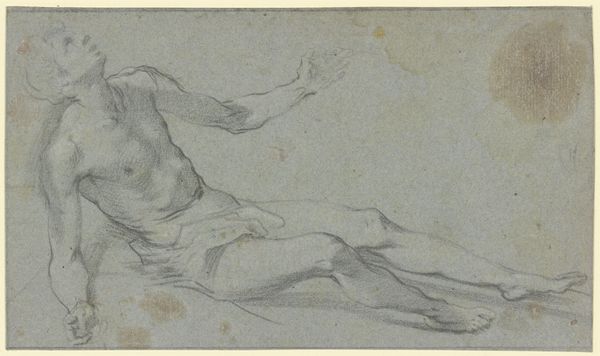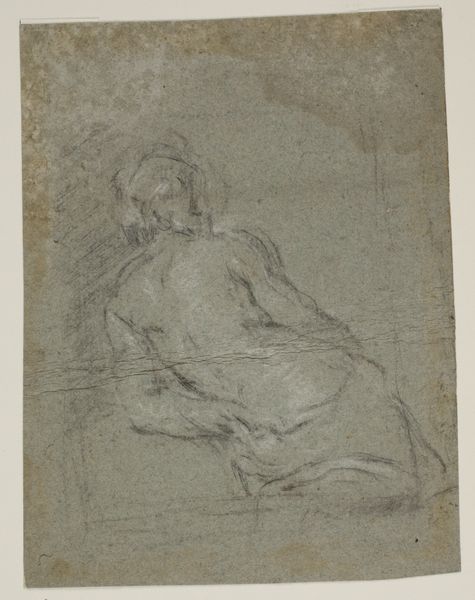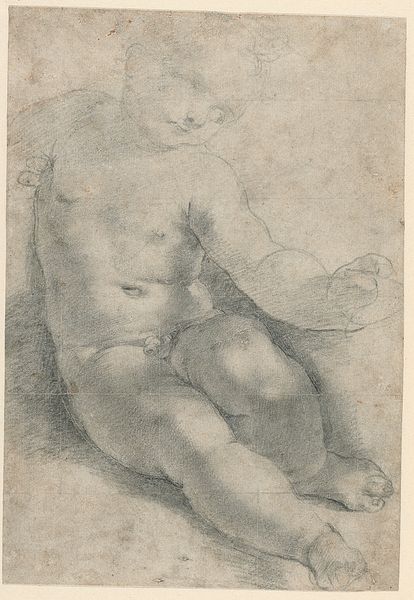
Figure of the Dead Christ with Mourning Angel (The Lamentation) 1695 - 1705
0:00
0:00
drawing, print, pencil
#
portrait
#
drawing
#
baroque
# print
#
figuration
#
pencil drawing
#
pencil
#
angel
#
christ
Dimensions: 3-9/16 x 4 in. (9.0 x 10.2 cm)
Copyright: Public Domain
Editor: This is Pedro Duque Cornejo's "Figure of the Dead Christ with Mourning Angel (The Lamentation)", made between 1695 and 1705. It’s a pencil drawing. The angel feels secondary in the composition, almost an afterthought. What strikes you about this piece? Curator: It’s interesting you notice that, given the charged iconography. This drawing exists within a specific social and institutional context. Consider the role of religious imagery during the Baroque period. How were these images used to convey power and influence? Think about the public's relationship with the church and how art functioned as a visual tool. Editor: So you’re saying the art served to solidify the Church's message. Do you think the starkness of the medium affects how successful it is in conveying that message? Curator: Precisely. While color and grandeur often characterize Baroque art, this drawing employs a humble medium, focusing on line and form. How might this difference affect its reception and interpretation, compared to, say, a large altarpiece? What does this pencil sketch afford an artist that an oil painting in the church could not? Editor: It could allow for greater intimacy...a rawness of emotion, maybe. Was Cornejo perhaps going for that, to create a more personal connection? Curator: It’s certainly a possibility, especially considering the potential role of drawings like these as preparatory studies or personal reflections. These works may have been viewed as exercises, not intended for public consumption, influencing their perceived value. What assumptions do we make about public and private works? Editor: That's a great point. It makes you reconsider who the intended audience truly was and, perhaps, who controlled the narrative about whose voices and work would ultimately prevail. Curator: Precisely. These smaller drawings played a part in the broader ecosystem of artistic production and the church, a small piece within a much larger societal picture.
Comments
No comments
Be the first to comment and join the conversation on the ultimate creative platform.
